The British Army has selected Boxer for the Mechanised Infantry Vehicle requirement.
The Boxer is an eight-wheeled multirole vehicle, consisting of two key elements: the platform/drive-line and the removable mission module. The mission module is a key feature of Boxer, it allowing the vehicle to be rapidly changed to meet different operational requirements. Mission modules are attached by four points and can be swapped within an hour under field conditions.
According to an MoD press statement:
“The UK will re-join the Boxer programme and explore options to equip the Army with the 8×8 troop carriers to modernise its vehicle fleet and meet the Army’s Mechanised Infantry Vehicle requirement.
The UK played a major role in the original design, development and testing of the Boxer, and would reassume the rights it had as a project partner if a deal was to go through – allowing the option for the vehicle to be built and exported from the UK. The deal could see the Boxer fully assembled in the UK with at least 60% of the manufacturing with British industry, sustaining and developing UK industrial capabilities, facilities and skills.
Artec, the consortium who manufacture the Boxer vehicle, have already made commitments to British industry by signing partnership agreements with BAE Systems, Pearson Engineering and Thales UK, in anticipation of a deal being struck.
It is expected that British companies would compete for the manufacture and supply of many of the vehicle sub-systems, as well as for a full production and assembly line in the UK. Estimates suggest Artec’s planned investment in the UK could secure or create at least 1,000 jobs, based across the country including locations such as Glasgow, Newcastle, Sheffield, Stockport, Telford and Wales.”
As part of the proposed deal, the UK is also expected to see substantial inward investment from Rheinmetall, one of Artec’s parent companies, who signalled their intention to launch a production and integration centre for armoured vehicles in the UK as part of the programme. This would represent a significant commitment which would lead to long-lasting armoured vehicle capability in the UK.



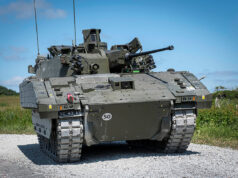
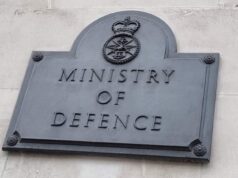
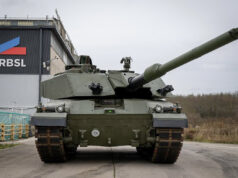
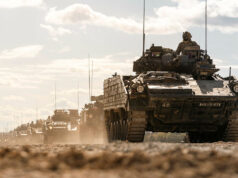
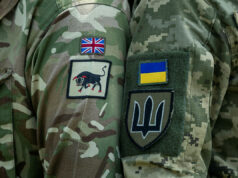
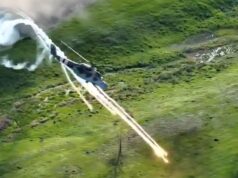

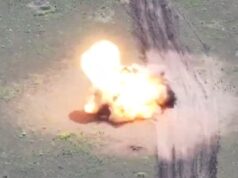

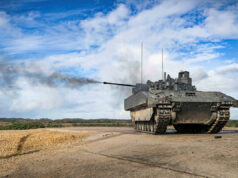

Just goes to show what a huge mistake it was to leave the project in 2003, made necessary by Labour defence cuts to pay for the Iraq war.
The idiots wanted somethimg light so it could be air transported in a C130-J. Not sure how much protection that would have offered, thankfully they saw their folly after Iraq and Afghanistan and we have now ordered the right vehichle. I wonder how often the mission modules will we swapped out, it does sound useful for when a conflict de-escilates. From a protection point of view boxer appears to be in a league of its own.
“its to big and heavy” was the spin at the time to leave the project, but I understand the real reason was the cost of the project.
The expenditure required to prepare and sustain the Iraq 2003 operation was draining financial resources out of the MOD. Political demands for cuts were being to a large number of programmes, the Army was prepared to sacrifice Boxer in the hope of new vehicle in the future in the shape of FRES and we all know how that turned out.
When you lookvat the cost of updating the obsolete equipment we had plus buying all of the additional MPV’s through the urgent operational requirements I hope the treasury learnt a painful lesson. Does anyone have a list of all the MPV’s that are planned to be sold its more than just the Broncho I’m sure.
Or did we unwittingly save enormous development money on this vehicle? FRES was a complete waste of money if viewed retrospectively, so obviously, the Boxer save was canceled out? That said, rumours at the time of Britain’s withdrawal from the programme, believed the Boxer had become too heavy for the needs of the army?
I believe this to be a win-win for the UK Army and the military business in general, and I doubt any other vehicle will be considered going forward.
I understand we spent £200m on FRES UV before it was scrapped.
We spent £50m on Boxer development costs before our withdrawal.
Throw in the cost of Tracer, UK/US joint project, the UK spent well over £300m on three projects that all failed to deliver a single operational vehicle.
The UK MOD procurement process at its very worst.
So, Mike, my Q is, how much of this was determined by #s 10 & 11 and imposed on MoD? I don’t know myself, but having watched a few other programs it seems the MoD gets an awful lot of stick for trying to live with decisions from above.
There have been many stories in the press over the past couple of years about the army wanting the Boxer.
It seems they have got their wish.
As long as it’s affordable and budgeted for I don’t think the politicians care that much.
Why was Tracer canned, it looked like a promising vehicle?
Hope its not made down to a price instead of up to quality..ww2 comes to mind and our early crap tanks.
Let’s make sure we order some with a 120mm gun as they could be operating ahead of our tanks.
I doubt that seeing as the MoD wasn’t convinced by the Ajax variant with the large calibre gun. Though it would be nice to have a Stryker MGS like vehicle perating with the troops. Eases pressure on C2.
Yes the Direct Fires variant. Instead they are using standard Ajax with 40mm Cannon as light tanks.
Ajax’s cannon certainly isn’t an equivalent to a 120mm or 105mm tank main armament. That said it’s 40mm CTAI design is not merely space saving but much more effective than both traditional 40mm rounds and larger calibres.
Isn’t big enough for a 120 gun
It can be equipped with a 155mm howitzer artillery module, so although no one has yet ordered a 120mm gun variant there is no doubt such a gun/turret could be fitted.
Hi Tim
MIV is being purchased to equip 4 Infantry Battalions in the 2 Strike Brigades.
I would think anything operating ahead of our tanks ( Which Strike Brigades don’t have anyway ) would be the armoured cavalry regiments of the RAC operating Ajax in the future.
Each Strike Brigade will have 2 of these Regiments. 1 as Medium Armour, 1 for Recc.
Daniele the idea is that Strike will self deploy across long road marches, essentially working as a Division reconnaissance Brigade, able to arrive in theater and march into position long before CR2’s of the AI brigades get there (Also remember that the AI brigades won’t have armoured RAC recce units attached anymore so Strike Brigades will HAVE to be in front of AI brigades not beside them). So yes, they will be operating ahead of the Tanks.
Imagine a square division like so:
xxxxxx Enemy xxxxxx
-Strike x- -Strike x-
-AI x- -AI x-
-xx HQ-
Big guns are old hat..small targets full of plenty different types of a.t killer missiles.
This is one of the reasons boxer has been selected, it’s flexibility.
https://youtu.be/mn_WblYc4xk
And more information
https://youtu.be/kBMF29_8q2M
Glad to see someone at the MOD had seen sense.
Lots of flexibility with the various modules
The 155mm gun module looks a good version, I think it carries slightly less ammo than the AS90
But it would be faster and modern.
And it also fits in the Airbus A400M.
Fingers crossed
Guys reread the quote in the article. The boxer has not yet been selected, we are just back considering it. It looks unlikely that it won’t be selected now, but it hasn’t yet happened. I assume any decision is awaiting to see how much money there is with the defence review.
I would like to see a design with a mortor choose, to align our forces with our allies, and move them into more heavy indirect fire support. I would assume indirect fire is probably more flexible in urban warfare , which swems the of warfare, but might be wrong.
Steve I have read the article several times and whilst you are factually correct given the history this looks like a done deal to me.
The upside for the Germans is that given their restrictive export rules a second production line in the UK would allow Artec to export Boxers to middle Eastern markets, like KSA, UAE, etc.
Something similar was done with Leopard 1 in the 70s where Italy set a production line for that vehicle and promptly exported it to the likes of Libya.
To me this looks like a good deal for everyone with the caveat that it’s so expensive that we cannot order sufficient vehicles, I would hate to see the UK end up with 200 vehicles and 500 modules.
It can be fitted with 40 mm GMW automatic grenade launcher.
Think Defence has a very good article on the Boxer.
https://www.thinkdefence.co.uk/boxer-armoured-vehicle/
Can someone more knowledgeable explain; at most 60% of the assembly work will be done here. But the most valuable parts of the value chain, like design and r and d, are done in Germany. That, to me, seems to be bad for UK manufacturing?
Very happy to be corrected on this, not trying to be facetious, just curious.
As I read it the article says 100% assembled in the UK with parts which will be 60% sourced from the UK.
Given we gave the project two fingers 15 years ago that doesn’t seem a bad deal.
As I mentioned above a UK production line will give greater export appeal due German laws on exporting military equipment.
That is fair enough, but high-value bits like R&D have already been done in Germany then I assume? Or rather, none of that stuff will happen in the UK?
I am thinking about future heavy armour development in the UK.
I agree that if we said “sod off” to the project 15 years ago, this is a pretty good deal, especially if it does open a new production line. What I cannot get to grips with is where upgrade development and so on, will happen?
Frank to be honest I don’t think the UK has a future for the design and development for heavy armour vehicles.
Given the cost it makes sense to join multi national projects or buy off the shelf.
This is very sad but given the political mismanagement of the defence budget and lack of a coherent defence industrail strategy since 1990 we have no other affordable options.
The U.K. doesn’t have a future doing practically anything, that is the problem (car companies owned by foreigners, train making owned by foreigners, tiny steel industry compared with other major European countries, no commercial shipbuilding compared with other major European countries, armoured vehicles making owned by foreigners).
If we had disappeared from some fields then fair enough, but not every single field without a single exception, whilst other major European countries have massive industries in several different fields.
We are also a major European country, we have a famous and illustrious history of engineering. We have been absolutely humiliated, no other major European country has done this, only us. There has been a deliberate and organized war against British heavy industry for decades and it has to stop.
If France, Germany, Italy, can manage to do all of these things so can we. Whatever policies that are in place that are allowing them to do this, put them in place in Britain. We have to rebuild Britain’s heavy industries in at least some of these fields and support them.
Agree 100% with Steven G.
This country is world beating if only it stops looking inwards on itself with PC shame crap and actually invest in itself. Services sector and rebuild industry.
Stephen G.,
I fully agree with your sentiment, though I do not think we are that bad, not yet at least.
See: https://blog.gesrepair.com/top-10-manufacturing-countries/
Based on the GMCI index.
It really depends on what assembled actually means, as it could mean anything and depends how how close to the final product the manufacturing phase gives. I think the more realistic figure is the 60% manufacturing.
How it was the same with the Ajax and so it seems British industry just can not build armored vehicles anymore, which means you have a choice, of paying through the nose for rebuilding that capability or you go foreign and take advantage of cost.
The Boxer seems expensive, but equally it seems the best performing of the options and it is a proven design.
The main question now is just how much money is there available and what roles are we planning to use them and how will this integrate with the other platforms that were purchased during the iraq/afgan conflict.
Unless i misunderstood, the original plan for the Ajax was to have more versions, but it was cut back due to budgetary reasons.
British industry could perfectly well build armoured vehicles etc. IF WE WERE ONLY GIVEN THE CHANCE.
This has been done DELIBERATELY as part of the decades long organized war against Britain’s heavy industry. You don’t accidentally shut every single last one of your countries armoured vehicle makers (or every single last one of your countries train makers, etc.) without realizing we will always need these things. This has been done DELIBERATELY so we would be forced to buy from foreign companies IN EVERY SINGLE FIELD. This was their plan all along.
WE HAVE TO END THE DELIBERATE WAR AGAINST BRITAIN’S HEAVY INDUSTRIES, REBUILD AT LEAST SOME OF THEM, AND SUPPORT THEM.
If other major European countries can manage it, so can we. We are not being the ONLY major European country with practically zero heavy industry. We have been absolutely humiliated. Far from costing us money, it will make us money in the long run as we will have something to export
Export or die, we chose die.
Governments, industry, trade unions all have to share the majority of the blame.
Don’t you know we are service economy, and that is really good for the country?
That was the political spin before the recession from both parties whenever a manufacturing business was either sold abroad or went under.
Then the truth emerged when one of these service industiies (banking) crashed the economy.
The UK government owns the intelectual property for the boxer from its original development work, most of which was completed when we left.
As mentioned in previous comments the uk spent £200mm on r&d for fres which bore very little fruit but who knows maybe some of the technology needs to mature like electric armour that thermal cammo bae debuted.
Considering BAe own united defense, boffers and vickers they should be winning defense contracts in the uk without breaking a sweat. It seems be cheaper for general dynamics and reinmetal to setup shop and start from scratch in the uk than bae to utilise their existing infrastructure.
In Germany an engineer is respected and considered a valuable asset to the economy and on par with doctors etc. In the UK engineers are the unwashed hordes that do everything from cleaning the toilet to building an aircraft carrier. The word Technician and Engineer has been bastardised by the UK to mean anything; and as such we are placed in such a wide band of skill sets which mean nothing to the average person. Germany heavily invests in engineer training and as such has excellent trade in mechanical and electrical engineering. We are simply buying the best available due to the lack of investment (and respect) for our own engineering.
Hugely expensive vehicle. If they dont buy it in enough numbers and enough variants its not worth doing. If they just buy the APC version with the Protector RWS with 50 cal it wont be a massive leap forward over Mastiff( which is already payed for) for a big cost.
If they bought 1000 in all variants it would make Strike worthwhile. No CT40 turrets/mortar carriar/ATGW etc etc and itl be a waste of time
It will be a miracle if we get 500.
Exactly. Thats why it wont work. My guess is there wont be any turrets either.
4 mil a pop and no real gain over Mastiff.
If that is so why order it?
This really is the question that needs answering and one we won’t know until someone decides actually what a medium weight strike brigade role is, which remains unclear to me. If it is designed for high intensity warfare, we will need a way to counter aircraft and tanks, which means we need a version with some form of missile system, since if a tank gets into range of these vehicles, its game over for them, since their armour just can’t compete.
Spot on Steve. There remain serious questions about the make up and ORBAT of the Strike Brigades.
Exactly. If its not in the many variants we need its a pointless aquisition. Only time will tell. A straight up APC is next to useless so we might aswell just use what we have payed for already ie Mastiff.
CTA40 turret doubles the price apparently though
Develop a CT40 mission module?
It is been purchased as an APC though. The CT40 is for AJAX.
Maybe not for the UK but would Boxer with a CT40 be attractive to export customers?
Afternoon All
It was a done deal back at DSEI 2017.
This is all part of the themes the MoD are now starting to put together, not on the what necessarily bu the how.
This also goes to show until you have your requirements sorted out, base lined and agreed only delay and cost can come. The scope hasn’t really changed and the quality will be acceptable.
Lack of requirements capture is a result of poor or weak leadership. To often the MoD has to bend to the political narrative, too often naive military leaders get manipulated by those that surround them (industry, senior civil servants and opportunist politicians) and they rush to the next stage of the cycle – The bit that gets the headlines “Acquisition” or more commonly known as “awarded a large defence manufacturer a contract to develop something”. Ribbons get cut, handshakes and jobs.
In March 2018 the Australian Army announced Rheinmetall’s Boxer had won the contract for the Combat Reconnaissance Vehicle (CRV) under LAND 400 Phase 2 project.
Replacing the current ASLAV fleet, the majority of CRV variants will be fitted with the LANCE turret system and a 30 mm cannon which also provides an option for a twin Spike ATGM launcher. The CRV will have a crew of 3 and 6 dismounts.
Rheinmetall will deliver 211 Combat Reconnaissance Vehicles with the first vehicles ready for training in 2020 with the first 11 to be built in Germany and the remainder at a new manufacturing plant to be built at Ipswich outside Brisbane.
The $2.8 billion of Australian content will generate 1,450 jobs with defence contractors nationally. The specialised tempered steel for the Boxer’s armour will be made in New South Wales.
The Department of Defence completed a comprehensive tender process over three years, during which the vehicles were rigorously and extensively tested across Australia with Boxer beating out its final rival the AMV Patria.
The evaluation program included destructive testing to simulate IEDs. Anecdotal reports suggest the Boxer was able to be driven away after the blast, however the Patria was not.
The win by Rheinmetall now places its Lynx IFV offering, which also mounts the LANCE turret as the favoured contender to take out the LAND 400 Phase 3 requirement for 450 tracked IFV’s to replace the Army’s ageing but upgraded M113AS4 APCs.
https://www.army.gov.au/media-room/media-releases/armys-next-armoured-fighting-vehicle-announced
In addition to winning the Boxer contract Rheinmetall is already supplying 2,700 HX series medium and heavy tactical vehicles to the Australian Army under LAND 121 Phase 3B.
As a result Rheinmetall Defence Australia will build a permanent headquarters for its Australian and Asia-Pacific markets to be known as the Military Vehicle Centre of Excellence (MILVEHCOE) at Ipswich outside Brisbane.
Rheinmetall will transfer technologies to Australia in military vehicle design, production, turret systems, sensors, survivability, simulation and through life support and create a national asset for military vehicle production in Australia.
Over time the role of the MILVEHCOE will expand to include the sustainment and upgrading of vehicles as well as producing, sustaining and upgrading other vehicles in the Rheinmetall fleet for clients in the Asia-Pacific region.
Once peak production is reached it is expected that the MILVEHCOE facility will typically produce one Boxer every three day and one logistics vehicle every day.
Excellent! Looks like we are getting our ducks in a row starting with government to government commitment and industrial strategy.
Who would have thought that 6 months ago?
Steady as she goes, steady as she goes
Knew something was in the offing when Ursula Von der Leyen came to visit Gavin Williamson so soon after being appointed. Generous of the Germans to let us back into the program on what looks like will be a win-win arrangement. Pragmatic decisive government.
I have to say I have mixed feelings about this, from a good news point of view I am really happy and pleased we have chosen Boxer, however it does highlight once again the poor decision making of the MOD and the sheer waste and lack of strategic thought.
I do wonder what these cant do that Ajax/Warrior can? And if the answer is nothing, then why have we committed to Ajax and Warrior CSP.
Don’t get me wrong I like Warrior and Ajax, but once again we have 3 variant (4 if you look at Terrier) when perhaps 1 would suffice.
If as I suspect Ajax fits into he heavy armour force – that is fine, but not what it is being sold as.
Boxer is a great product and given the issues with the Warrior SCP turret we should perhaps look to standardise on Boxer.
The other thing is that this may be more air transportable as the drive units can be separated from the “active” module.
It seems to me that the strategy for our land force is unclear and disfunctional, not to mention exceptionally wasteful and Sir Nick Carter is responsible for this debacle but seems to have been promoted rather than censored for this waste.
Exactly. CDS now! Is that not typical though?
Warrior and CH2 in armoured brigades is fine. Issue is Ajax has been stolen from those brigades and placed in planned wheeled Strike brigades.
Indeed, hopefully these types of questions will come up at committee.
“Can you explain why the British Army, of which you were professional head and ultimately responsible as SRO doesn’t seem to be able to invest tax payers money in a responsible way, specifically CDS I am talking about the near £700 M you, as a single service have spent to date trying to work out what type of 8 wheeled armoured vehicle you want?”
Sad to see him promoted to such a strategic position. He may be good at other things but thinking logically may just not be his forte.
I would like to see us doing more deals like this with the Germans. They need to replace their Tornados and Typhoon at the right price with an equitable work share is an obvious way to go I would have thought.
In my humble opinion Mastiff type vehicles are only good for counter insurgency work, where the enemy is limited IEDs and RPGs. They have poor off road capability and are rather high making them stick out like a sore thumb on the battlefield.
The Boxer and other 8*8 vehicles have excellent off road capability and mobility.
The army needs both types and tracked platforms to team up with C2.
Not sure about the strike brigade concept, if the enemy has modern ATGWs you need lots fire power to overwhelm them as the Saudi incursion in to Yemen has shown. The lack of a LRATGW in the UK arsenal is a serious omission and I cannot understand why this is not being addressed.
For me the British army needs heavy armoured brigades, rather strike brigades.
Anyway i am sure the very clever people at the MOD know what there doing.
We will have heavy armoured brigades Mike. But only 2 rather than current 3.
The planned Strike brigades however have hamstrung them, removing organic recc elements to firm Ajax regiments for strike and reduced them from 5 manouver formations to just 3 – 1x Challenger 2 and 2 x Warrior.
And there lies the slight of hand. Our current 3 armoured brigades have 15 regiments and battalions of infantry and armour. The 4 planned brigades now will have 14. A small cut, but a cut nonetheless, dressed up by David Cameron as Strike Brigades with little ability to strike anything at present.
Agree with earlier comments Strike needs considerable extra firepower in all areas.
Morning
MASTIFF family of vehicles were part of a wider UOR specifically for Afghan. The size of the UOR got so great those platforms and the other wheeled vehicles that went with them had to be brought into the ORBAT, very much like the BRONCO which has now been completely withdrawn – it was a total waste of money.
Our politicians react, do not let activity look like achievement – it’s not.
John Reid, with his immortal words “not a shot will be fired” set a political tone that meant Afghan was never planned for, just reacted against, you just have to look at all the strategic failures that were papered over by some amazing soldiering and a British JFDI.
The British do not know how to look after British industry. That is why they slide down scale to 6/7 and now below Republic of France!
Really?
Who says?
And seeming as both are pre-eminent European powers who cares???
Jee wiz. France are above the UK. Get the tissues out.
i kinda feel there needs to be a fundamental rethink of how we spend our money and focus from the ground up (pun unintended). Start by working out how many front line combat troops you need to fight a realistic battle, and then budget for them. From there work out what gear they need and I mean need and buy that. Only then do you look to top end equipment.
Right now it seems we are buying top end gear to show we are tier 1 military, without actually thinking about the core expenditure in manpower. Iraq/Afghan showed we don’t have enough troops for the job and yet the numbers have been cut further, to pay for fancy gear like the carriers, which should be cherries on top and not first choice of expenditure and they have resulting in existing ships being left alongside due to lack of sailors.
Really don’t get how we have ended up with this style of thinking.
the strike brigade seems to be from the same thinking and doesn’t appear to be linked up to anything in regards to what threat it is designed to counter or really linked to the overall defence spending.
Agree entirely with both Steve’s comments.
The Strike brigade concept looks like a relic from the ‘expeditionary’ era. With Boxer and Ajax, it would be a fine force to handle COIN warfare in the likes of Afghanistan or Iraq. But are we going to be doing many such adventures in the future? – I doubt if popular opinion would support that.
The much more likely prospect is needing to beef-up our deterrent forces in eastern Europe and the Baltic Republics, to deter or meet further Russian adventurism and games. Can’t see much role for a Strike bde there, maybe manning a defensive line or patrolling the RCZ, but not really at the pointy end of the battle. For that, we’d need a good deal more than two under-strength armoured infantry bdes, properly equipped and reinforced, with Challenger and Warrior updates all done.
Overall, the balance of combat brigades needs I think to be 2/3rds heavy, 1/6th Medium (aka Striker), 1/6th light (3 Cdo, 16 Air Assault). What we have, under Nick Carter, is a 2/3rds Medium/light force that would be of limited use in the European theatre. Doh…
Yes, that would be the obvious, common-sense way to do it. Commitments and manpower first, kit second and fancy gear last. We seem to have got into a reverse equation, where the fancy kit is the political priority and everything else is chopped back to pay for it.
Problem is, if you set out what we actually need, it is light years from what we’ve actually got, either now or in the pipeline. Even at the most minimalist calculation, I would say we are short of something in the order of 40 warships, 119 fast jet combat aircraft and 6 army brigades. Basically, we should have stopped cutting both forces and budgets in the late 1990s and we would have been roughly OK today.
Alas, I can’t see any politician grasping this nettle now, the difference between what we have and what we need is now so great. The only way of proceeding would be to set a 10-year plan – 2030 anybody?! – and try to grow the force and equipment incrementally. An extra 2 T26 frigates, because our ASW capability is far short, ditto an extra Astute or a quartet of diesel-electric subs, 24 extra Typhoons to bring the 7 squadrons up to peacetime strength, one additional armoured brigade – might get away with that with a determined Secretary of State, particularly if there are no more FRES-type MOD fiascos.
Morning
Article has now crossed the pond:
https://www.defensenews.com/land/2018/04/02/uk-to-re-join-boxer-program-17-years-after-opting-out/
Shifting over to a 4 brigade division will allow for a full war fighting division of 3 brigades to form in a major crisis. I think it was the only way they could do it considering before the 2010 defence cuts we had 2 ready divisions of 6 brigades which of course allowed a division to be sent to Iraq in 2003. So obviously something had to give with units being moved around to form the extra brigade. I doubt it will be very often that Britain mobilises a full Division but you always need the ability to do so, you never know from decade to decade what’s around the corner.
Just to add to the above i think the Boxer is a good choice to make..
I really hope that the Boxer will have better protection than the Canadian LAVs or the US Strykers having seen how badly they coped with IEDs. The Mastiffs by comparison shrugged off IEDs, yes wheels were blown off or the vehicle overturned but apart from a sore head and bruises the occupants were generally ok! This was a different story with the LAVs and Strykers, they had quite a few casualties. This may be Afghan centric but the 8x8s did not cope with the rainy season when they had to go off road. The solid concrete like”dirt” turned to a clingy mud that didn’t support their weight. The LAVs/Strykers had a lot of additional bar armour and even with the tyres deflated they really suffered to grip without grounding out. The Vikings and the Dutch/Canadian Leopards by contrast coped well with the conditions. The Canadians had additional belly armour fitted to their Leopards due to the casualties they suffered with their LAVs.
So the operational context needs to be explored before these fast brigades are deployed i.e. can they cope off road during a rainy season etc.
I believe the Boxer modularity gives us a number of growth options and the MOD needs to explore these. To make the Boxer brigades organic they need to ensure that not only IFVs are purchased, but engineering support vehicles, ambulances, C2, in-direct support, air defence, anti tank etc. If the brigades are made up using just the one type of chassis with different support modules this will be a major benefit for logistic support.
By all accounts its protection levels against IEDs are pretty high, certainly higher than the AMV Patria.
When destructive testing was conducted for the Australian Army’s final two Combat Reconnaissance Vehicles (CRV) contenders, the Boxer was reported as being able to be driven away, while the Patria was immobilised.
One of the reasons no doubt why the Boxer won the CRV competition.
http://images.defence.gov.au/Boxer-01.jpg
Actuall the Land 400 Project office confirmed that CRV blast testing was to be conducted with vehicles defuelled. Any driving away was outside the scope that could be considered for evaluation. Rather I suspect the instrumentation of CRV crew stations confirmed less shock imparted to the Boxer crew during shock tests.
[…] Defence Journal 2 квітня повідомив про наміри Міністерства оборони Великої Британії […]
The BOXER is a good vehicle, but since our inept politicians and MOD, chose to devastate our home defense industry, we now have to buy battlefield taxis from the Germans.
Why dont we just bit the bullet and get the best deal from whatever supplier and save the country billions?
BAE can then just rely on the US market instead of ripping off the UK taxpayer.